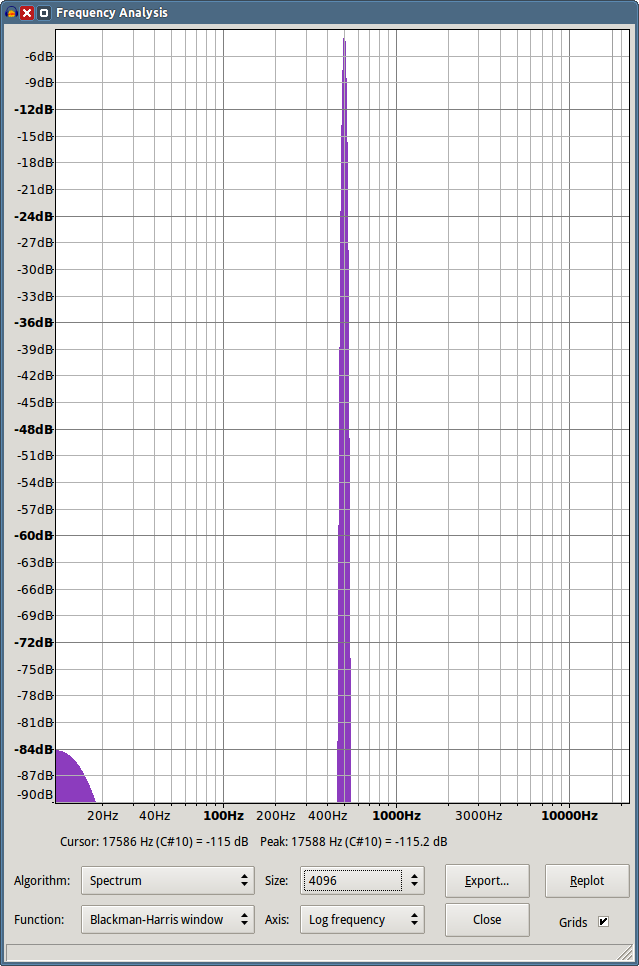
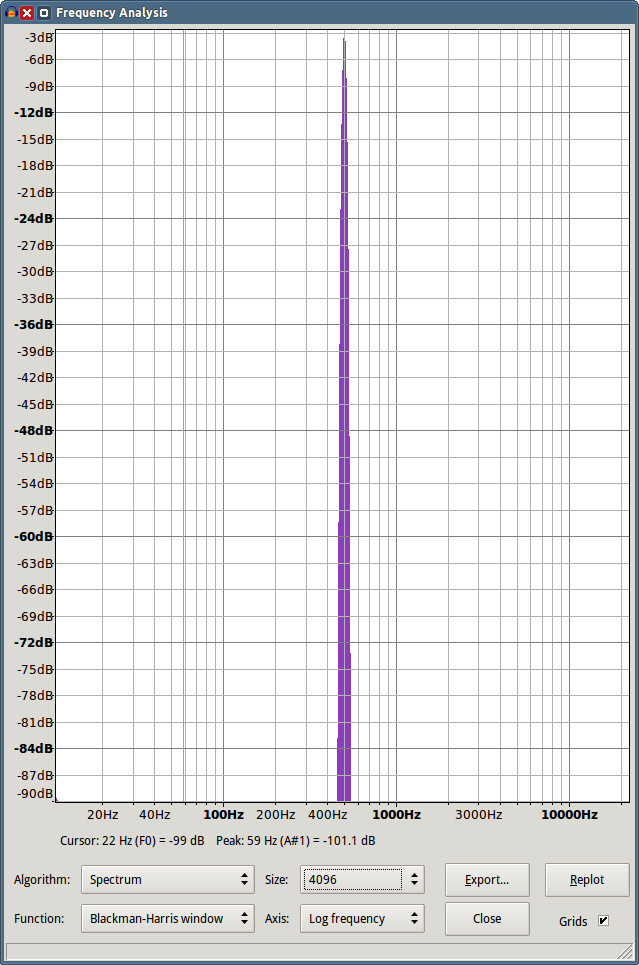
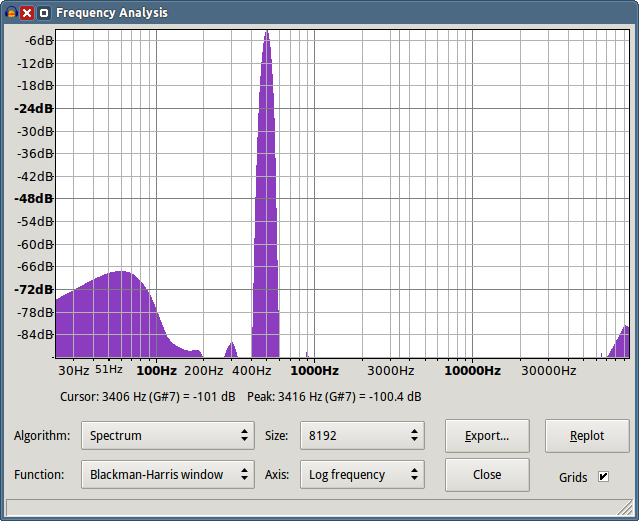
I subjectively reviewed this amp on Head-Fi and finally got around to measuring it.
Summary
The Jazz is the best headphone amp I've heard. For the past 16 years I've been listening to a Headroom Maxed out Home and the Jazz has replaced that as my primary headphone amp for both critical listening and sheer enjoyment.
Methodology
I used test tones from
Stereophile Test CD 2,
copied them to my hard drive in WAV form,
and played them using my
Juli@ sound card.
For reference, I measured 3 ways:
I took 3 basic measurements:
The Jazz amp has switchable gain, so I measured it in both low and high gain modes. I also measured it with the volume knob at the 12:00 and 3:00 positions. Sometimes the high gain at 3:00 overloaded my sound card input, so I discarded those measurements.
NOTE
When I first did this about a week ago, I didn't measure the Jazz properly. The Jazz has a unique output stage that is neither balanced nor unbalanced. It is called active balanced ground driving It is a balanced signal that is compatible with headphones designed for unbalanced. The ground carries part of the L and R channels, each of L and R has the ground summed into it. A single-ended transducer responds to the difference between signal and ground. That difference ends up the same as R and L respectively.
However, a single ended input to a recorder or amp doesn't respond like a transducer. It wires signal ground to frame and measures only the signal. Thus it shorts the Jazz active ground, which could damage the Jazz amp. Having shorted the active ground it loses the signal component that must be subtracted from the R and L, so it picks up the active ground that was summed into each channel, which brings in a portion of the opposite channel.
In short, it distorts the signal and can damage the amp.
To measure the Jazz properly, one has to connect it to a balanced input and wire it accordingly. Fortunately, my Juli@ sound card supports both balanced and unbalanced inputs and outputs, by removing the card and reversing a daughter board. I did exactly this, wired up a custom cable, and measured the Jazz.
However, the Jazz input must be unbalanced analog. Having put my Juli@ into balanced mode, I couldn't use it play the test signals. Thus I had to use an old CD player I had lying around. The CD player I used was a Marantz CDR-630, a dated but high quality professional audio recorder.
Also, because I was measuring balanced audio on the Juli@, I increased the sampling frequency to 192 kHz. This is why the Jazz spectrum graphs go up to 90+ kHz. Just ignore all the stuff above 20 kHz, which is the right hand side 1/4 of the graphs.
Because of this, the absolute values of the Jazz distortion measured somewhat higher, because it reveals the distortion inherent to the Marantz CDR-630 (which is higher than the Juli@ sound card). So the Jazz distortion values are to be taken relative to each other, not in comparison to the Maxed out Home.
Finally, I normalized the amplitude of each set of measurements to a peak reference level of -0.5 dB. Thus the low gain settings were amplified more than the high gain.
Frequency Response
All 3 devices measure within 0.25 dB of perfectly flat from 20 Hz to 20 kHz. The MOH gradually drops to -0.25 dB at 20 kHz, while the Juli@ and Jazz are ruler flat. A quarter dB at 20 kHz is inaudible to humans, so frequency response is virtually perfect and uninteresting to graph.
Harmonic Distortion
| Juli@ | MOH (unity gain) | Jazz (high gain, 12:00) |
 |
 |
 |
Other Jazz configurations.
| low gain 12:00 | low gain 1:00 | low gain 2:00 | low gain 3:00 |
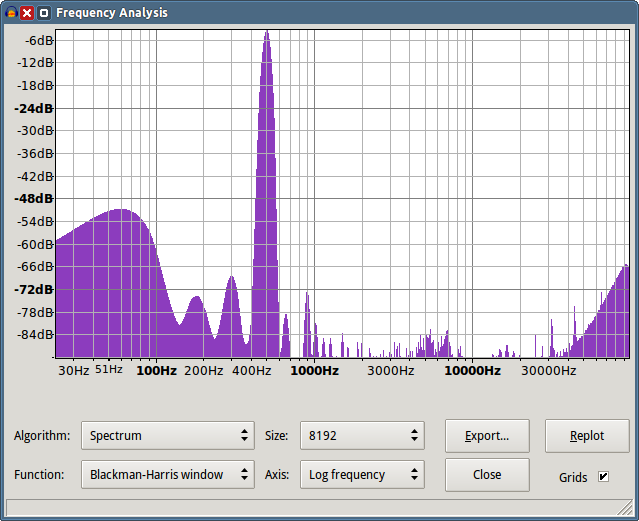 |
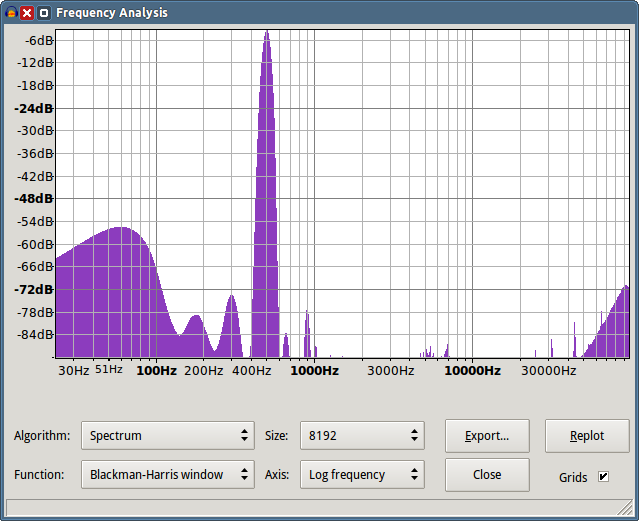 |
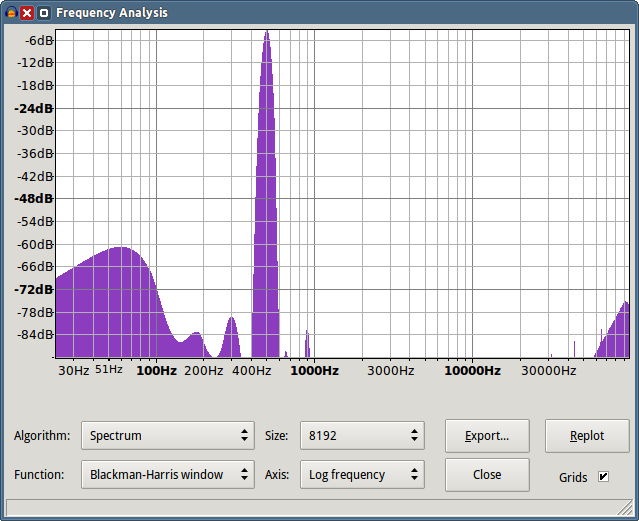 |
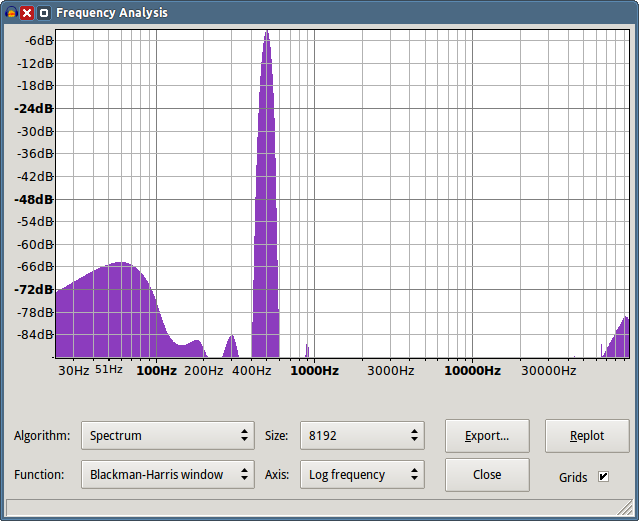 |
| high gain 12:00 | high gain 1:00 | high gain 2:00 | high gain 3:00 |
 |
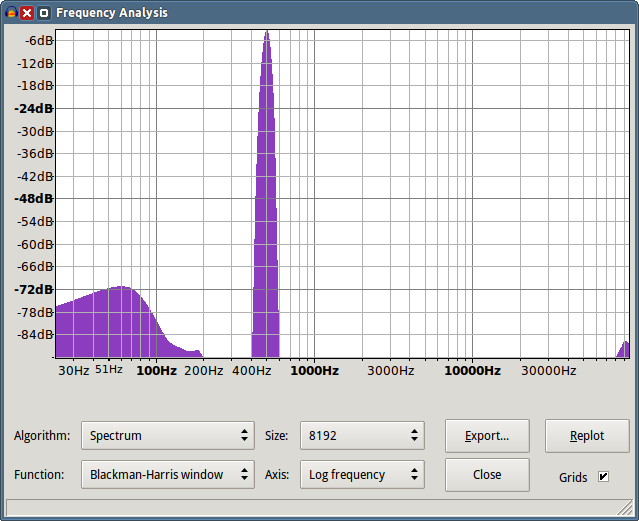 |
 |
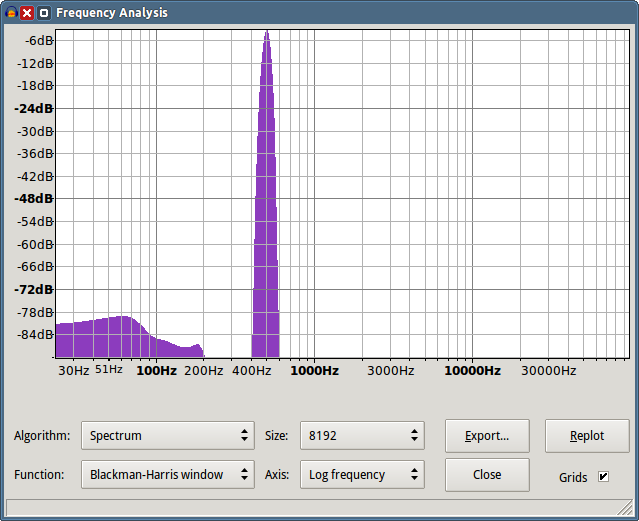 |
Intermodulation Distortion
This test tone has 2 pure sine waves at 19 and 20 kHz, so the sum peaks at 0db. It is the worst case signal of testing IM distortion.
| Juli@ | MOH (unity gain) | Jazz (high gain, 12:00) |
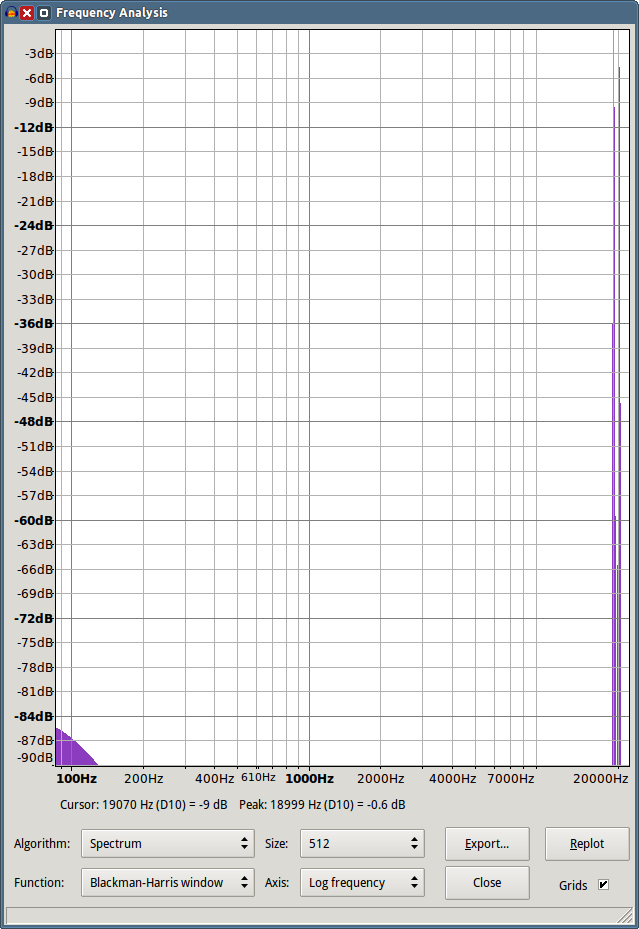 |
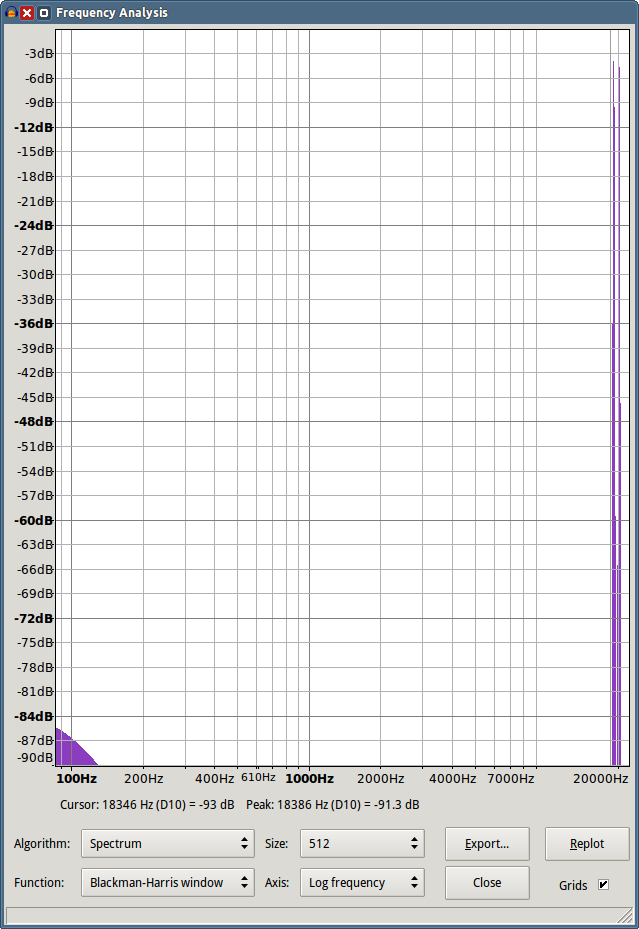 |
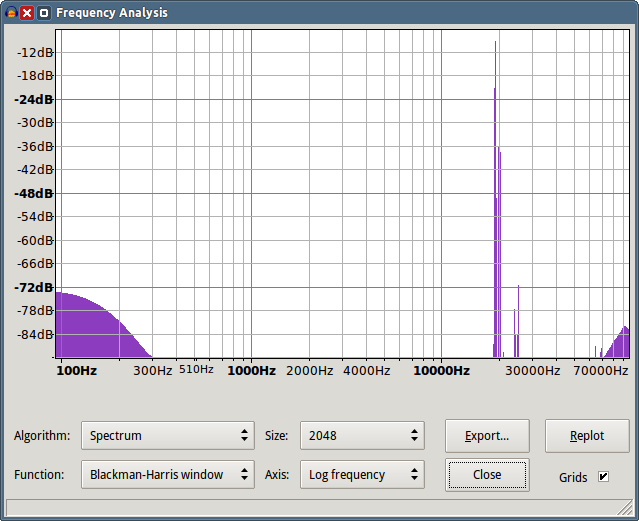 |
Here are a few more Jazz measurements.
| low gain 12:00 | low gain 1:00 | low gain 2:00 | low gain 3:00 |
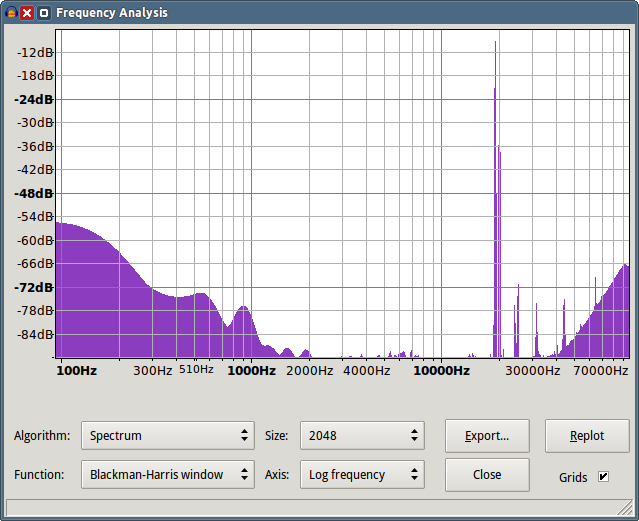 |
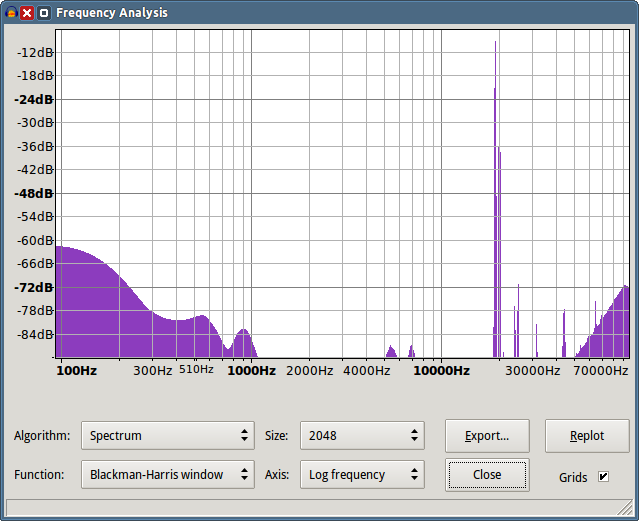 |
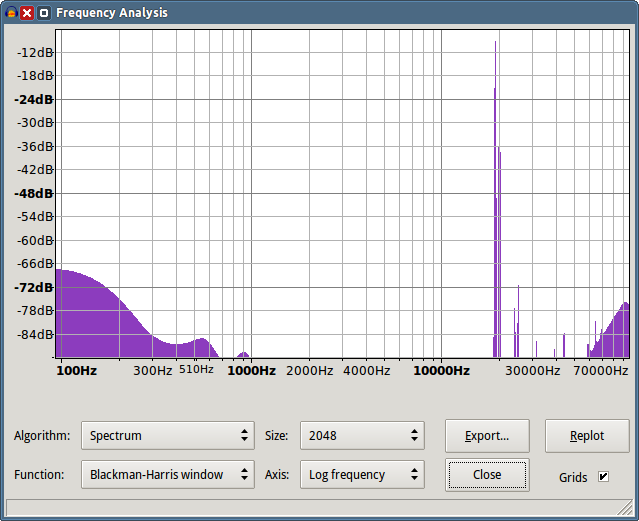 |
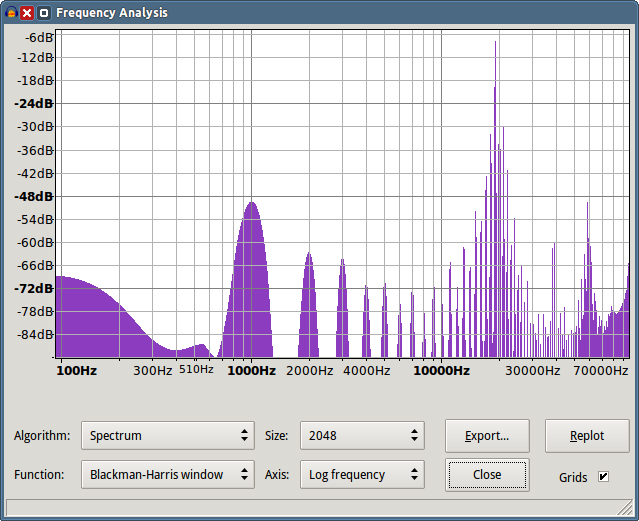 |
| high gain 12:00 | high gain 1:00 | high gain 2:00 | high gain 3:00 |
 |
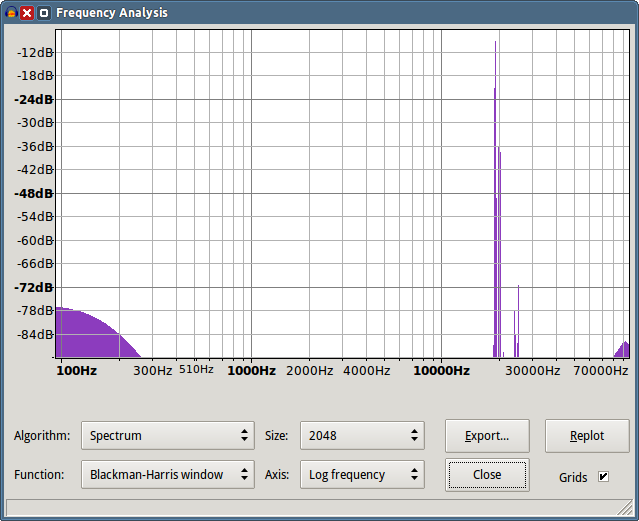 |
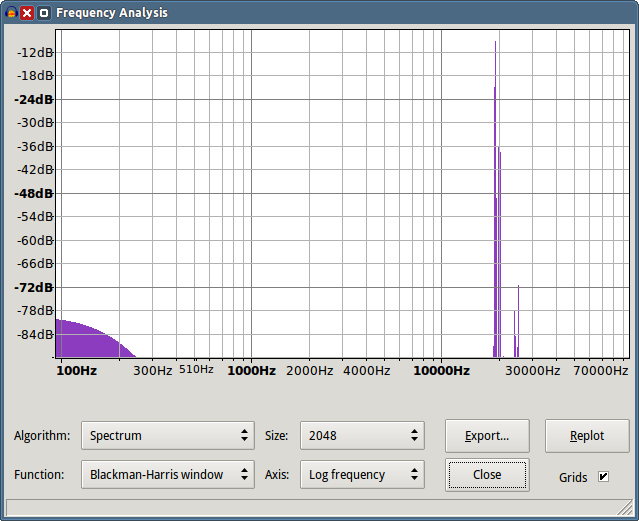 |
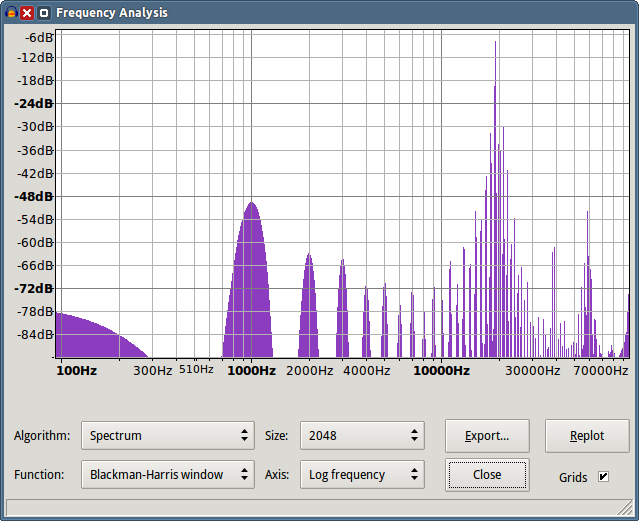 |
Here I found an interesting anomaly. The Jazz output goes non-linear somewhere between the 2:00 and 3:00 positions on the volume knob. It's clean at 2:00, yet at 3:00 the IM distortion is high enough to be audible. The Jazz is a superbly clean amp, but if you're in low gain mode, going beyond the 2:00 position, switch to high gain mode instead.
Better yet, keep it in high gain unless you really need low gain. The Jazz's unique volume knob has no analog potentiometer in the signal path, and has perfect channel balance, so you can use the bottom end of the range with no sacrifice in sound quality.
Conclusion
All three of these components have truly excellent measurements. The Jazz goes non-linear at 3:00 and beyond on the volume knob, but you'll never use this range if you have the gain switch set properly.
I already observed that the Jazz is a superb sounding amp: detailed, sweet, neutral, linear, and dynamic, with a natural, subtle headphone processing switch that is the best I've ever heard. It is at least as good as any headphone amp I've listened to at 3x its price. Now I see it has excellent measurements to match. And I learned something new about balanced, unbalanced, active ground, and how to measure it properly.